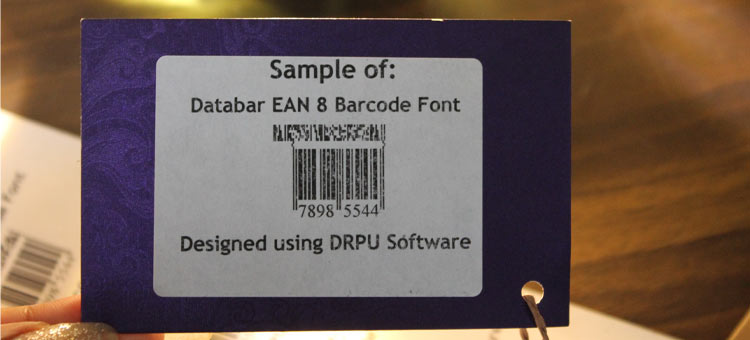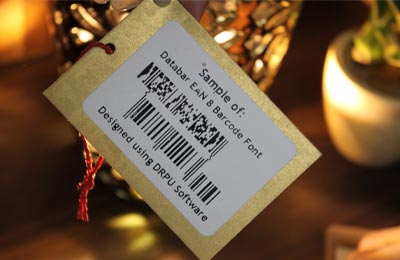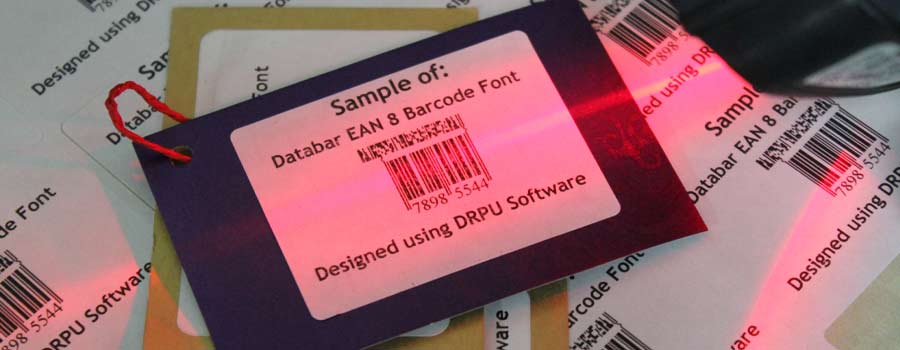Decoding Databar EAN 8 Barcode
Decoding a Databar EAN 8 barcode is a process that involves a barcode scanner or reader. The barcode scanner reads the information encoded in the barcode and translates it into human-readable text or data that can be used for various purposes.
Steps to decode a Databar EAN 8 Barcode:-
Obtain a Databar EAN 8 Barcode Scanner or Reader:
Databar EAN 8 barcodes can be read by most barcode scanners and readers that support this type of barcode.
-
Power on Databar EAN 8 Barcode Scanner or Reader:
Most barcode scanners and readers have a power button or switch to start the scanner that must be turned on before use.
-
Position The Scanner or Reader Over The Barcode:
The scanner or reader must be positioned directly over the Databar EAN 8 barcode to read the information.
-
Press The Scan Button or Trigger of Scanner:
Most of the barcode scanners and readers have a button or trigger that must be pressed to activate the scanning process.
-
Wait for The Scanner or Reader to Read The Barcode:
Once the scanner or reader has been activated, it will emit a beam of light that illuminates the barcode. As the beam of light passes over the barcode, the scanner or reader captures the information encoded in the barcode.
-
Receive The Decoded Data in Sacnner or Reader:
The scanner or reader will translate the information encoded in the barcode into human-readable text or data. This data can be viewed on the screen of the scanner or reader or transmitted to a computer or other device.
-
Use The Decoded Data:
Once the data has been decoded, it can be used for various purposes, such as tracking inventory, processing transactions, or gathering customer information.
It is important to note that the process of decoding a Databar EAN 8 barcode may vary depending on the type of scanner or reader being used. Some scanners and readers may have additional features or options that can be used to customize the scanning process. Additionally, some barcode scanning software may need to be installed on the device being used to read the barcode.
Databar EAN 8 Barcode Read by Barcode Scanners
Databar EAN 8 barcodes can be read by most barcode scanners that are capable of reading EAN and UPC barcodes. However, not all barcode scanners are created equal, and some may have difficulty reading Databar EAN 8 barcodes if they are not specifically designed to do so.
-
It is important to note that there are different types of barcode scanners available on the market, each with its own set of capabilities and limitations. For example, some barcode scanners are designed to read only linear barcodes, while others are capable of reading both linear and 2D barcodes, including Databar EAN 8 barcodes.
-
In addition, the ability of a barcode scanner to read a Databar EAN 8 barcode also depends on the quality of the barcode itself. If the barcode is damaged, smudged, or printed poorly, it may be difficult for a scanner to read the barcode correctly. Similarly, if the barcode is printed at a very small size or is poorly aligned, it may also be difficult for a scanner to read the barcode.
Overall, if you are using Databar EAN 8 barcodes in your business, it is important to choose a barcode scanner that is capable of reading these barcodes and to ensure that your barcodes are printed clearly and accurately. This will help to ensure that your products can be scanned quickly and easily at the point of sale, which can improve efficiency and customer satisfaction.
Advantages of Using Databar EAN 8 Barcode
The Databar EAN 8 barcode offers several advantages over other barcode types. These include:
-
More Information in a Smaller Space:
The Databar EAN 8 barcode can encode more information in a smaller space compared to traditional barcodes, which is a significant advantage in the retail industry where space is limited. This enables manufacturers to include more information on their products, such as batch number, expiry date, and serial number. The barcode is small in size and can be printed on small products and packages. This allows for more efficient use of space and reduces the cost of packaging.
-
Improved Product Tracking:
Databar EAN 8 barcodes help retailers and manufacturers to track their products more efficiently. Since Databar EAN 8 barcodes can store additional information about products, retailers can easily track product movements and sales across their supply chain. They can also quickly identify issues such as stock shortages, damaged products, or products nearing their expiry date.
-
Reduced Error Rate:
Databar EAN 8 barcodes reduce the error rate in scanning and data entry. The barcode scanner reads the barcode automatically and enters the information into the computer system, eliminating the need for manual data entry. This reduces the risk of errors that could occur in the manual data entry process.
-
Enhanced Productivity:
With the use of Databar EAN 8 barcodes, the speed of data entry and product tracking is improved, leading to increased productivity. The barcode scanner can read the barcode and enter the information in a matter of seconds, while manual data entry can take minutes or even hours. This means that retailers can handle more products and transactions in a shorter amount of time, increasing their productivity and efficiency.
-
Cost-Effective:
Databar EAN 8 barcodes are cost-effective compared to other types of barcodes. Since they require less space for printing, manufacturers can reduce their packaging costs. Additionally, they are widely used and readily available, making them affordable for small and medium-sized businesses.
-
Compliant with International Standards:
Databar EAN 8 barcodes are compliant with international standards set by the GS1 organization. This means that they can be used globally and are recognized by retailers and manufacturers worldwide. The use of standardized barcodes also helps to reduce confusion and errors in data entry across different regions and languages.
-
Improved Customer Experience:
The use of Databar EAN 8 barcodes can improve the customer experience by providing accurate and detailed product information. With the additional information encoded in the barcode, customers can easily find the information they need about a product, such as nutritional information, allergens, and manufacturing location. This can help customers make informed decisions about their purchases, leading to increased customer satisfaction.
-
Increased Data Capacity:
The Databar EAN 8 barcode can store more data than the traditional EAN-8 barcode, including supplementary information such as serial numbers, batch numbers, and expiration dates.
-
Enhanced Reading Performance:
The barcode can be read from any direction and angle, providing greater flexibility and ease of use for scanning equipment to read it easily and tekes less time to read.
-
Global Standard:
The barcode is standardized by the GS1 organization, ensuring that it can be used worldwide and is compatible with different types of scanning equipment.
-
Improved Inventory Management:
The barcode provides accurate and timely data about inventory levels, enabling businesses to optimize their supply chain and reduce inventory costs.
In conclusion, Databar EAN 8 barcodes offer several advantages over traditional barcodes, including more information in a smaller space, improved product tracking, reduced error rates, enhanced productivity, cost-effectiveness, compliance with international standards, and improved customer experience.
Difference Between EAN 8 and EAN 13 Barcodes
EAN (European Article Number) barcodes are a family of barcodes used to identify products in the retail industry. The EAN system was introduced by the International Article Numbering Association (now known as GS1) in 1977 and has become the standard barcode system used in most countries. EAN barcodes are used to identify products and can contain information such as the manufacturer code, product code, and price.
EAN barcodes come in two formats: EAN-8 and EAN-13. The main difference between these two formats is the number of digits they can hold. An EAN-8 barcode is eight digits long, while an EAN-13 barcode is 13 digits long.
-
EAN 8
EAN-8 barcodes are used for small products, such as candy bars or small bottles, where there is not enough space for a larger barcode. The EAN-8 barcode consists of two parts: The left-hand side contains the country code and the manufacturer code, while the right-hand side contains the product code and the checksum digit. The country code is a three-digit code that identifies the country. The manufacturer code is a four- or five-digit code that identifies the manufacturer of the product. The product code is a two- or three-digit code that identifies the specific product. The checksum digit is used to verify the accuracy of the barcode.
-
EAN 13
EAN-13 barcodes are used for larger products, such as books or electronics, where there is more space for a larger barcode. The EAN-13 barcode consists of three different parts: The left-hand side contains the country code and the manufacturer code, the middle section contains the product code, and the right-hand side contains the checksum digit. The country code and manufacturer code are the same as in the EAN-8 barcode. The product code in an EAN-13 barcode is a five-digit code that identifies the specific product or item. The checksum digit is used to verify the accuracy of the barcode.
One advantage of using EAN-13 barcodes is that they can hold more information than EAN-8 barcodes. This can be useful for tracking inventory or managing a supply chain. Another advantage of EAN-13 barcodes is that they are more widely used than EAN-8 barcodes, so they are more likely to be recognized by barcode scanners.
One disadvantage of using EAN-13 barcodes is that they require more space than EAN-8 barcodes, so they may not be suitable for smaller products. Another disadvantage is that they are more expensive to produce than EAN-8 barcodes.
Summary: The main difference between EAN-8 and EAN-13 barcodes is the number of digits they can hold. EAN-8 barcodes are used for small products, while EAN-13 barcodes are used for larger products. EAN-13 barcodes can hold more information than EAN-8 barcodes and are more widely used, but they are more expensive to produce and require more space.


